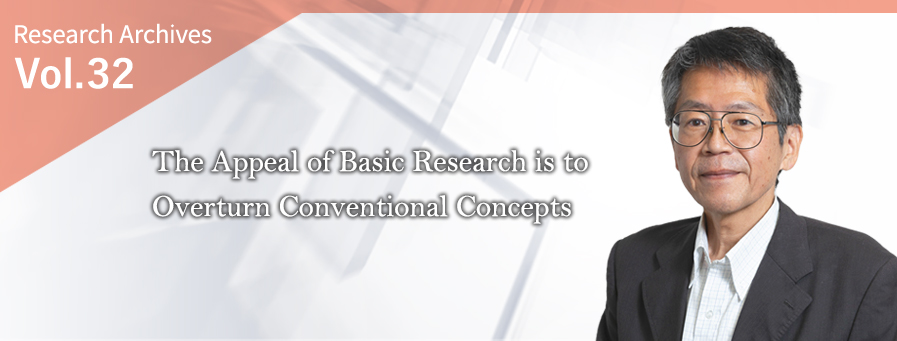
Department of Neurobiology, Graduate School of Medicine, Hokkaido University
Haruyuki Kamiya M.D., Ph.D.Interdisciplinary
Medicine
- (Academic & Professional Experience)
-
- 1987 : Research assistant Kanazawa University School of Medicine
- 1992 : Research associate University of California at Berkeley
- 1996 : Lecturer Gunma University School of Medicine
- 2000 : Associate Professor Kobe University Graduate School of Medicine
- 2004 : Professor Hokkaido University Graduate School of Medicine
Discovery of analogue modulation of digital signals in the brain
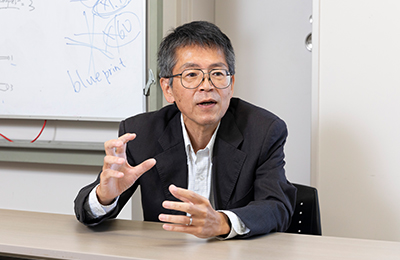
The Department of Neurobiology is engaged in research on axons in the brain. In the neural circuit of the brain, thin cable-like structures called axons transmit electrical signals at high speed. However, since the axons of the brain are extremely thin, it has been difficult to directly capture their electrical activity. In recent years, the method of making brain slices has made great strides, and it has become possible to prepare high-quality slice specimens that enable direct recording from an axon (subcellular recording).
“Advances in the brain slice method have made it possible to directly record axon activity, which has been difficult in the past. In this department, we are conducting research toward understanding the operating principle of neurons using subcellular recording from the terminals of a single axon,” Professor Haruyuki Kamiya says. In 2018, Professor Kamiya’s research group succeeded in measuring nerve signals from a single nerve axon in a mouse hippocampus. It was discovered that action potentials (digital signals in the brain) are modulated into analogue in response to neural activity. A commonly accepted theory had been that digital signals in the brain follow the all-or-none law, but Professor Kamiya’s research group found that analogue modulation occurs there. When doctor course student Mr. Shunsuke Ohura who was in the group at that time, was conducting an experiment in which brain slice specimens were prepared from a mouse hippocampus and electrical stimulation was applied to nerve axons called mossy fibers, he discovered that repeated stimulation at short intervals slightly diminished the size of the action potentials of nerve axons. As a result, it led to the finding of analogue fine-tuning from 1 to 0.9 (Figure 1) although the size of action potentials had been considered invariant (1).
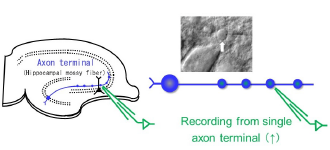
The figure on the left is a schema of a mouse hippocampal slice specimen. The patch-clamp technique was used to measure the action potentials from the axon terminals of mossy fibers (green). The upper photo shows the axon terminal (arrow) where the action potentials were recorded.
“When I first saw the experimental data, I thought something was wrong, but the result was the same no matter how many times the test was conducted. Being reproducible, I was convinced that this was a new mechanism for information processing in the brain,” the professor says. Furthermore, this phenomenon is thought to be caused by a phenomenon called afterdepolarization, which is characteristic of the action potentials of nerve axons and may involve a voltage-dependent sodium channel (resurgent sodium channel) that exhibits sustained activation. This research is positioned to have overturned the conventional theory that action potentials are digital signals and to have elucidated a part of the elaborate control mechanism of neural information by enabling analysis at the single nerve axon level, which had been difficult, in mouse brain slice specimens. The research results were published in the eNeuro magazine on February 12, 2018.
“Currently, in Europe and other areas, scientists try to reproduce human brain activity using supercomputers, but those studies assume that nerve axons are just ‘digital cables.’ In contrast, our research results will prove that the human brain is more complex and flexible, and that it has advanced information processing functions. By adding a factor other than 0/1 to the neural activity that was thought to be 0/1, it is possible to get closer to the reproduction of more realistic brain activity. I think our discovery has greatly contributed to one of the major goals of brain physiology, ‘understanding the mechanism of how the brain works,’” the professor says.
Aiming for universal research like classical music
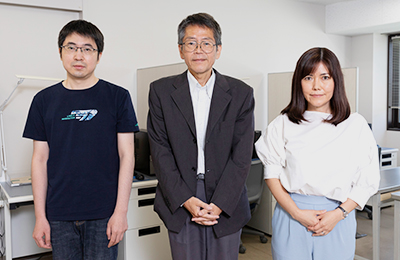
In the department, they are conducting research that incorporates computer simulation as well as experiments. Subcellular recording from a single axon, which is very difficult, and elucidation of principles and mechanisms using computer simulation – both are conducted in a single laboratory. Professor Kamiya says that he wants to convey to students the fun of the “two swords.”
“Electrophysiology is an orthodox experimental method with a long history. In recent years, however, it has become possible to capture the phenomenon in milliseconds due to the development of the patch-clamp and other techniques. The number of researchers who are tackling subcellular recording is still small, and it is an area where new discoveries are likely to be made. By modeling the hypothesis derived from such a discovery and reproducing it on a computer, a more reliable conclusion can be drawn. Some of such research results will have a great impact, overturning or rewriting the previous commonly accepted theories and concepts,” the professor says.
Professor Kamiya also describes the importance of basic research in the field of physiology as being “like classical music.” “Classic doesn’t mean old-fashioned; it’s based on a solid foundation that won’t fade after 50 or 100 years. Research with a certain value that does not change regardless of social changes and trends, such as a violin or piano performance, is attractive and cutting-edge,” he says. “Hokkaido University is broad-minded, a place where you can engage in various types of research activities, from innovative research that can contribute to society immediately to basic research that looks ahead 100 years from now. The students of the medical school are very talented, good at scientific thinking and scientific approach, and many of them have high potential as researchers. Since they have entered graduate school to do research, I would like them to dream of rewriting conventional concepts.”
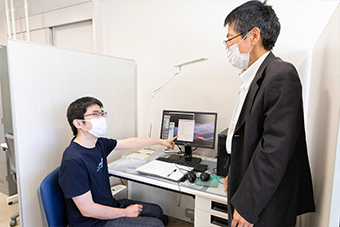
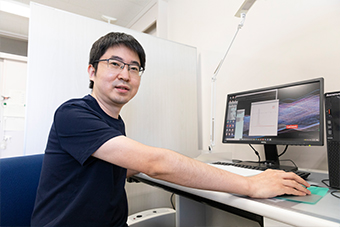
Zhao Peng, a graduate student, examines and analyzes the results of simulations with Professor Kamiya.
(Interviewed in July 2021)
Promoting the appeal of axon research to the world with international students
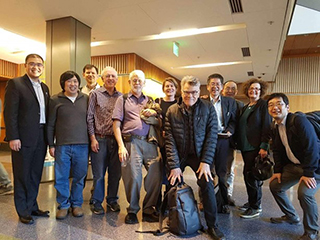
Since the laboratory is comprised mainly of international students, professor Kamiya is actively interacting with overseas laboratories, dispatching graduate students to training courses of the Federation of European Neuroscience Societies (FENS), giving lectures at the University of California, and promoting various other international exchanges. Last year, he also planned and published an eBook co-authored internationally with a French researcher. It has been accessed by many axon researchers around the world. He hopes to convey the message, “The world is wide, the world is amazing, and the world is interesting!” to future scientists.


